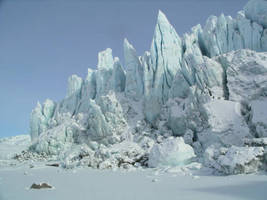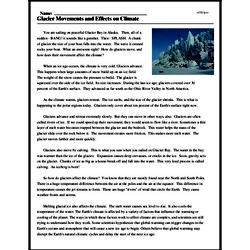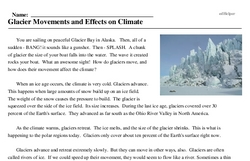Glacier Movements and Effects on Climate
You are sailing on peaceful Glacier Bay in Alaska. Then, all of a sudden - BANG! it sounds like a gunshot. Then - SPLASH. A chunk of glacier the size of your boat falls into the water. The wave it created rocks your boat. What an awesome sight! How do glaciers move, and how does their movement affect the climate?
When an ice age occurs, the climate is very cold. Glaciers advance. This happens when large amounts of snow build up on an ice field. The weight of the snow causes the pressure to build. The glacier is squeezed over the side of the ice field. Its size increases. During the last ice age, glaciers covered over 30 percent of the Earth's surface. They advanced as far south as the Ohio River Valley in North America.
As the climate warms, glaciers retreat. The ice melts, and the size of the glacier shrinks. This is what is happening to the polar regions today. Glaciers only cover about ten percent of the Earth's surface right now.




